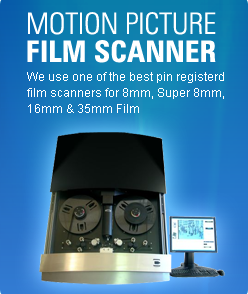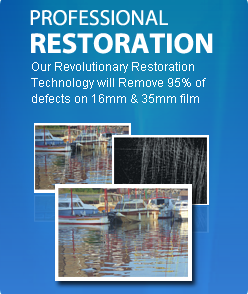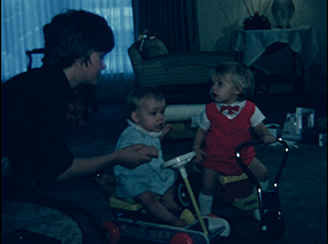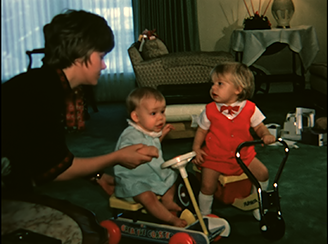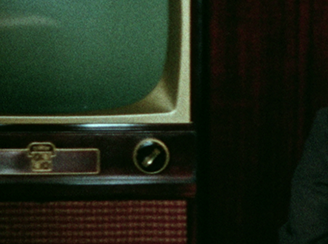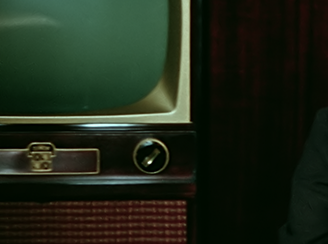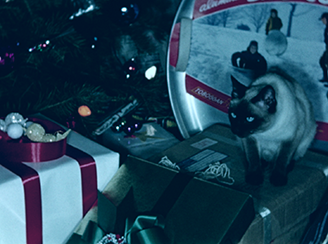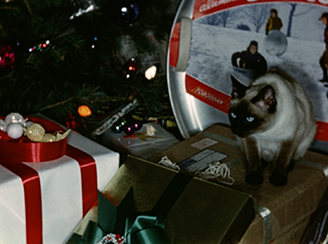
Pro Hollywood Restoration Omaha
We offer 3 restoration options. Color Correction, Grain Elimination and Stabilization Technology.
About 90% of our Omaha customers want the color correction and about 75% do the grain elimination. We do also offer image stabilization. It adds a nice touch to those old home movies.
Color correction is very important for amateur film because we will be able to recover more footage that was shot too dark or has darkened as part of the aging process. The scanner monitors the light and color balance and will change it based on pre-determined algorithms. This means it will pump more light through film that is dark and it will back off on film that is too bright. This will allow us to recover footage that would normally be too dark or too light. In addition, after the scan, an editor will go through the footage looking at skin tone and things like the color of the sky to order to make sure it looks correct. You can see in the examples below how much better the images look with our 2 pass color correction.
Grain is on all film. Look at the "Before" picture below compared to the "After" picture. These little dots muddy up the image and take away from the content you care most about. Now, look at the After picture on the right. This is what you really want to see. We do recommend Grain Elimination on all film for our Omaha customers.
Most amateur films have some stabilization issues just because of the way the film was shot. But, most people are used to seeing this on old movie film (See example video clip below). So, we see stabilization as a nice to have but not required. If you can afford to do it then we would recommend it. If it pushes you outside your budget then we would just recommend the Grain Elimination technology.
Super 8 Film Examples Omaha
|
|
Before |
After |
|
|
|
|
Before |
After |
16mm Film Examples
|
|
Before |
After |
|
|
|
|
16mm Before |
16mm After |
Omaha Fun Facts: Named for the Omaha Indians inhabiting in the area, the city was founded in 1854 and grew as a supply center for settlers heading weSt The arrival of the Union Pacific transcontinental railroad in 1869 made the city a major transportation hub. The region is one of America's centers for grains, livestock and food processing. Today, Omaha has a population of around 400,000, with a diverse economy that has retained its core agricultural products but expanded to include banking, insurance, telecommunications and other high-technology industries. Top corporations headquartered in Omaha include Ameritrade, Berkshire Hathaway, ConAgra Foods, Mutual of Omaha, Union Pacific Railroad, Sitel Corporation and West Teleservices.
Nebraska Fun Facts: Nebraska, which was admitted to the union as the 37th state on March 1, 1867, two years after the end of the American Civil War, contains some of the nation’s best ranchland and farmland. Prior to its statehood, the Nebraska Territory had been sparsely settled but saw growth during the California Gold Rush in 1848, with a larger wave of settlers arriving as homesteaders in the 1860s. Although the territorial capital of Nebraska was Omaha, when it achieved statehood the seat of government was moved to Lancaster, which was later renamed Lincoln after President Abraham Lincoln, who had recently been assassinated. Nebraska is bounded by South Dakota to the north, Colorado to the South, Wyoming to the West and Iowa and Missouri to the East.
